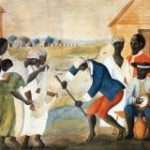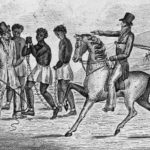When does the First Amendment allow the government to limit speech? Many Americans struggle with understanding the language and subsequent interpretation of the Constitution, especially when it comes to the rights encapsulated in the First Amendment. While many Americans can agree that speech should be protected, there are disagreements over when, where, and how speech should be limited or restricted. This lesson encourages students to examine their own assumptions and to deepen their understanding of current accepted interpretation of speech rights under the First Amendment, including when and where speech is protected and/or limited. It should reinforce the robustness of the First Amendment protections of speech.
Judicial Independence: Essential, Limited, Controversial
In a constitutional system of government, the role of the judiciary is essential for maintaining the balance of power, protecting individual rights, upholding the rule of law, interpreting the Constitution, and ensuring equal justice for all. In this lesson, students learn about the role of an independent judiciary in the United States.
Freedom of Speech
In this lesson, students examine the historical context and the drafting of the First Amendment by examining the motivations of the founding generation. Students will also examine various types of “speech,” such as symbolic speech, hate speech, and political speech, to address the scope of protections promised by the First Amendment and learn that speech can only be limited when it is intended to and likely to cause imminent violence. In each instance, students will explore when the government has some authority to restrict speech; areas of consensus among scholars, judges, and citizens; the strongest constitutional arguments on each side of contested issues; and U.S. Supreme Court cases that have addressed free speech rights.
Women Before the American Revolution
This short video explores the limited rights of women prior to the American Revolution. According to the idea of femme covert, women were legally and politically subservient to their husbands. Married women could not own property and all women were considered irrelevant to the political sphere. Professor Rosemarie Zagarri notes that 80% of the freemen in the colonies could vote (as compared to 20% in Great Britain), but suffrage was still limited to men.
Government Questioning Lesson
The objective of this lesson is to help students realize that the Constitution does affect them and have them come to the conclusion that they have to be an informed citizen and be careful of the sources they use to do the research.
How Did the Constitutional Convention Deal with Slavery?

This short video explains the differing perspectives that emerged about the Constitution and slavery. Some, like Frederick Douglass, believed that the Founders put slavery on the road to extinction while others, like Roger Taney, believed that the Constitution was a slaveholders’ document. Professor Gordon Lloyd contends that the slavery clauses in the Constitution both limited and expanded slavery’s impact, and that the Founders alone do not bear responsibility for slavery’s later expansion.
The Constitutional Convention: Lesson 3: Creating the Office of the Presidency

This lesson focuses on the arguments over the various characteristics and powers of the office of president as debated at Constitutional Convention of 1787. By examining the views of delegates as recorded in James Madison’s Notes of Debates in the Federal Convention of 1787, students will understand the arguments of those who supported either a strong, independent executive, or a very limited and highly controlled executive. Students will also see why, in the end, the delegates compromised.
Gradual Emancipation of Slaves After 1780

This short video examines the gradual but limited emancipation that occurred before the Constitutional Convention. In Northern states, fewer slaves and less racist sentiment enabled states such as Pennsylvania to pass gradual emancipation laws while even some Southern states, where racism was more entrenched, made it easier for slaves to be freed. However, as Professor John Kaminiski notes, the great political leaders of the South took no bold actions to free their slaves.